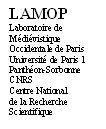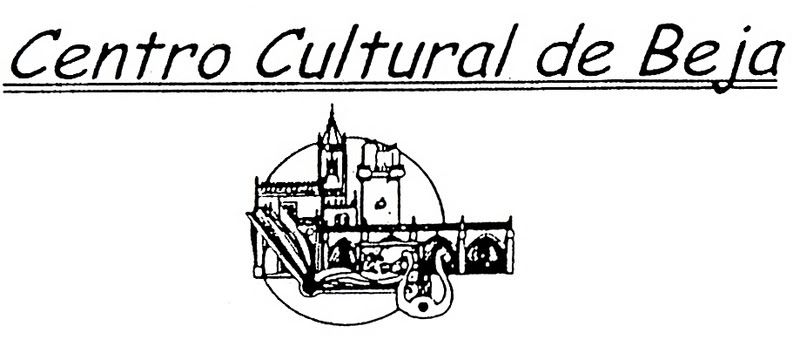February 16, 2008
Home <-
Introductory Debate
Structural analysis of wooden ships: another way to look at old things
A recent congress held in Nanjing (July 2005) for the 600th anniversary of Ming dynasty sailor and admiral Zheng He helped to tune an old [1] and obviously trans-cultural debate regarding the maximum «possible» size of wooden ships from the past [2].
Ming dynasty annals mention early XVth century Chinese ships of very large size (Bao Chuan , or Treasure Ships from Zheng He’s imperial expeditions- 1405/1433) which act as heuristic «sparks» for the coming debate.
Beyond the underlying discussion on ancient Chinese metrology [3]and related documentary aspects [4], the Nanjing debate of July 2005 helped to bring into focus major structural aspects and differences regarding ancient shipbuilding traditions in wood in past Asia [5] and Europe.
Well apart from the hydrostatics of ancient hulls [6], the fully interdisciplinary approach necessary to a structural analysis of ancient wooden vessels received until now very little exposure among historians and archaeologists due to academic specificities of the related disciplines and to the traditional shyness of humanities when confronted with «exact sciences».
However, several pioneer investigations by nautical engineers [7] and naval archaeologists [8] have already started to bridge the gap. Those pioneering works were undertaken in Europe and Asia. The present Asia-Europe Workshop initiated through the support of ASEF and the European Alliance for Asian Studies proposes, for the first time ever, to gather scattered issues and melt them into a true multi-cultural, transdisciplinary discussion platform.
The core of one major question to be discussed in Portugal next April may be put into simple terms:
-What may have been the maximum size of a true wooden ship of the past (built without metallic structural components or reinforcements)?
Present-day research indicates that answers to such a question differ significantly among the Asian and Western cultural and material contexts from the past [9].
The underlying concepts derived from such questions extend to the whole sphere of ancient shipbuilding in wood, all ships and sizes considered and help to delineate the solutions found by past shipbuilders in different cultural grounds to deliver structural solutions for the physical efforts to which ships are submitted in a seaway. Classical naval engineering concepts like «hogging» and «sagging» implemented since the XIXth century appear as «ready-made» tools for an initial approach.
Side by side with data compiled from social sciences by archaeologists and naval ethnographers [10] facing fast-disappearing material cultures both in Asia and Europe, present-day computing tools (finite element analysis applied to complex structures, to name one) invite to explore the matter further on and define the broad lines -and the limitations- of an analytical model defining the order of magnitude of structural parameters within distinct cultures of the nautical past.
Special attention is given to the application of concepts related with structural analysis like bending moment and shearing stresses directly applicable to some historical archaeological contexts and their insertion within an interdisciplinary description and analysis of the structural components of wooden vessels of the past.
The interdisciplinary approach underlying this project of Workshop is not limited to scholars and naval engineers. The nature of the debate encourages comments from contemporary shipbuilders in wood and their personal approaches to the discussion of wooden ships structural resistance and observed «anomalies». The debate is extended to sailors from similarly contrasted cultural horizons (Asia/Europe) with personal experience regarding the structural behaviour of large wooden sailing boats in a seaway.
Beyond the debate related with the inferable physical dimension of Ming Dynasty maritime enterprises, several cases in Asia and Europe are considered as field-tests for the structural concepts underlying the discussion proposed at the Workshop:
-Transversal and longitudinal framing observed on Chinese late medieval vessels excavated at Penglai (Shandong province, China)[11] and Shinan (Korea)[12]
-Finite elements analysis undertaken by naval engineers [13][14],regarding the structural analysis of late medieval Shinan vessel and medieval Scandinavian sailing boats.
-Structural components of XIXth and XXth century Asian wooden vessels as depicted in modern naval «ethnographical» sources (China: Fujian and Zhejiang provinces. Korea)
- «Anomalous» butt joins observed on the segments of the keel of a Renaissance vessel uncovered within a silted fluvial embankment at Cais do Sodré, Lisbon, Portugal [15].
- «Anomalous» relationship between keel and keelson sections on the remains of Compostellana II, an early XXth century Spanish wooden sailing vessel built in Galicia, N.W. Spain, and sunk in Peniche harbour (Portugal) in 1946.
The analytical concepts discussed within the normative framework of the proposed Workshop are to be applied to a few other wooden ship structures investigated and managed in Portugal, Europe and Asia.
As referred above, late medieval Chinese metrology or present-day nomenclature of wooden components from the last wooden sailing ships surviving in China are among the subjects to be presented and debated next April (2008) in Portugal.
The coming discussion goes beyond cultural geographical spheres and leads to probe into nautical border zones: the specific interest of the Philippines islands as a former transcultural nautical universe and the wide range of the nautical solutions implemented in the past throughout this archipelago since prehistory illustrate the broad chronological range of the discussion at stake. The structural solutions implemented in medieval ships in Butuan (Mindanao island) find a direct echo in parallel shipbuilding solutions in early medieval Scandinavia while other archaeological remains from the same archipelago directly illustrate the broad spectrum of ancient craftsmanship emanating from widely diversified cultural, nautical and geographical universes.
The coming debate in Portugal, next April, regarding structural solutions implemented by former shipbuilders in Asia and Europe thus aims at bridging the «mechanical» core of radically different shipbuilding solutions implemented in Asia and Europe in the past.
Norms adopted for this Workshop regarding ASEM members forbade including some major protagonists whose names will later be necessary to a discussion which is «global» by nature although rarely accessible as such in the scientific literature, with very few exceptions [16].
Present-day archaeological research in South-East Asia does bring questions regarding possible past interactions between very remote nautical universes.
Specific woodworking techniques like locked mortise-and-tenon wooden assemblage routinely attested in ancient Europe find disrupting echoes in early first century B.C. Vietnam [17] while the role of such plank assemblage in counteracting equally specific forces applied to wooden hulls starts to find its way in the structural analysis by ships engineers [18].
While direct or indirect links between early Han dynasty China and the Roman hemisphere still remain an hazy research ground to most of us, self-taught sinologist John Hill, from distant Queensland, in Australia, reminds us, in a generous publication made available on the Internet, that IIId c. A.D. China had routine access to written geographical sources which provided details on the Mediterranean and Roman cultural hemisphere.
The gradient of the maritime interface between the Indian Ocean and the Far East throughout Medieval times attested by historical and archaeological sources [19] brings into focus ethnographic evidence [20]which does reflect the shipbuilding, and therefore structural, options of shipbuilders of the past.
Our main obstacle in such heuristic constellations is clearly the broad scatter pattern of languages, disciplines, material evidence and related literature that our research target forces us to cope with.
The coming Asia-Europe Workshop will hopefully bring a contribution to such research challenges.
A recent congress held in Nanjing (July 2005) for the 600th anniversary of Ming dynasty sailor and admiral Zheng He helped to tune an old [1] and obviously trans-cultural debate regarding the maximum «possible» size of wooden ships from the past [2].
Ming dynasty annals mention early XVth century Chinese ships of very large size (Bao Chuan , or Treasure Ships from Zheng He’s imperial expeditions- 1405/1433) which act as heuristic «sparks» for the coming debate.
Beyond the underlying discussion on ancient Chinese metrology [3]and related documentary aspects [4], the Nanjing debate of July 2005 helped to bring into focus major structural aspects and differences regarding ancient shipbuilding traditions in wood in past Asia [5] and Europe.
Well apart from the hydrostatics of ancient hulls [6], the fully interdisciplinary approach necessary to a structural analysis of ancient wooden vessels received until now very little exposure among historians and archaeologists due to academic specificities of the related disciplines and to the traditional shyness of humanities when confronted with «exact sciences».
However, several pioneer investigations by nautical engineers [7] and naval archaeologists [8] have already started to bridge the gap. Those pioneering works were undertaken in Europe and Asia. The present Asia-Europe Workshop initiated through the support of ASEF and the European Alliance for Asian Studies proposes, for the first time ever, to gather scattered issues and melt them into a true multi-cultural, transdisciplinary discussion platform.
The core of one major question to be discussed in Portugal next April may be put into simple terms:
-What may have been the maximum size of a true wooden ship of the past (built without metallic structural components or reinforcements)?
Present-day research indicates that answers to such a question differ significantly among the Asian and Western cultural and material contexts from the past [9].
The underlying concepts derived from such questions extend to the whole sphere of ancient shipbuilding in wood, all ships and sizes considered and help to delineate the solutions found by past shipbuilders in different cultural grounds to deliver structural solutions for the physical efforts to which ships are submitted in a seaway. Classical naval engineering concepts like «hogging» and «sagging» implemented since the XIXth century appear as «ready-made» tools for an initial approach.
Side by side with data compiled from social sciences by archaeologists and naval ethnographers [10] facing fast-disappearing material cultures both in Asia and Europe, present-day computing tools (finite element analysis applied to complex structures, to name one) invite to explore the matter further on and define the broad lines -and the limitations- of an analytical model defining the order of magnitude of structural parameters within distinct cultures of the nautical past.
Special attention is given to the application of concepts related with structural analysis like bending moment and shearing stresses directly applicable to some historical archaeological contexts and their insertion within an interdisciplinary description and analysis of the structural components of wooden vessels of the past.
The interdisciplinary approach underlying this project of Workshop is not limited to scholars and naval engineers. The nature of the debate encourages comments from contemporary shipbuilders in wood and their personal approaches to the discussion of wooden ships structural resistance and observed «anomalies». The debate is extended to sailors from similarly contrasted cultural horizons (Asia/Europe) with personal experience regarding the structural behaviour of large wooden sailing boats in a seaway.
Beyond the debate related with the inferable physical dimension of Ming Dynasty maritime enterprises, several cases in Asia and Europe are considered as field-tests for the structural concepts underlying the discussion proposed at the Workshop:
-Transversal and longitudinal framing observed on Chinese late medieval vessels excavated at Penglai (Shandong province, China)[11] and Shinan (Korea)[12]
-Finite elements analysis undertaken by naval engineers [13][14],regarding the structural analysis of late medieval Shinan vessel and medieval Scandinavian sailing boats.
-Structural components of XIXth and XXth century Asian wooden vessels as depicted in modern naval «ethnographical» sources (China: Fujian and Zhejiang provinces. Korea)
- «Anomalous» butt joins observed on the segments of the keel of a Renaissance vessel uncovered within a silted fluvial embankment at Cais do Sodré, Lisbon, Portugal [15].
- «Anomalous» relationship between keel and keelson sections on the remains of Compostellana II, an early XXth century Spanish wooden sailing vessel built in Galicia, N.W. Spain, and sunk in Peniche harbour (Portugal) in 1946.
The analytical concepts discussed within the normative framework of the proposed Workshop are to be applied to a few other wooden ship structures investigated and managed in Portugal, Europe and Asia.
As referred above, late medieval Chinese metrology or present-day nomenclature of wooden components from the last wooden sailing ships surviving in China are among the subjects to be presented and debated next April (2008) in Portugal.
The coming discussion goes beyond cultural geographical spheres and leads to probe into nautical border zones: the specific interest of the Philippines islands as a former transcultural nautical universe and the wide range of the nautical solutions implemented in the past throughout this archipelago since prehistory illustrate the broad chronological range of the discussion at stake. The structural solutions implemented in medieval ships in Butuan (Mindanao island) find a direct echo in parallel shipbuilding solutions in early medieval Scandinavia while other archaeological remains from the same archipelago directly illustrate the broad spectrum of ancient craftsmanship emanating from widely diversified cultural, nautical and geographical universes.
The coming debate in Portugal, next April, regarding structural solutions implemented by former shipbuilders in Asia and Europe thus aims at bridging the «mechanical» core of radically different shipbuilding solutions implemented in Asia and Europe in the past.
Norms adopted for this Workshop regarding ASEM members forbade including some major protagonists whose names will later be necessary to a discussion which is «global» by nature although rarely accessible as such in the scientific literature, with very few exceptions [16].
Present-day archaeological research in South-East Asia does bring questions regarding possible past interactions between very remote nautical universes.
Specific woodworking techniques like locked mortise-and-tenon wooden assemblage routinely attested in ancient Europe find disrupting echoes in early first century B.C. Vietnam [17] while the role of such plank assemblage in counteracting equally specific forces applied to wooden hulls starts to find its way in the structural analysis by ships engineers [18].
While direct or indirect links between early Han dynasty China and the Roman hemisphere still remain an hazy research ground to most of us, self-taught sinologist John Hill, from distant Queensland, in Australia, reminds us, in a generous publication made available on the Internet, that IIId c. A.D. China had routine access to written geographical sources which provided details on the Mediterranean and Roman cultural hemisphere.
The gradient of the maritime interface between the Indian Ocean and the Far East throughout Medieval times attested by historical and archaeological sources [19] brings into focus ethnographic evidence [20]which does reflect the shipbuilding, and therefore structural, options of shipbuilders of the past.
Our main obstacle in such heuristic constellations is clearly the broad scatter pattern of languages, disciplines, material evidence and related literature that our research target forces us to cope with.
The coming Asia-Europe Workshop will hopefully bring a contribution to such research challenges.
Jean-Yves Blot, Asia-Europe Workshop Coordinator
___________________
[1] Chen Xiyu, 1991. Li Bangyan, 1991. Sleeswyk, 1998. Xi Long Fei , Chalmers, 2004. Cf. References at the end of this document
[2] Gong Changqi , 2005.
[3] Church, 2005. Idem
[4] Xi Long Fei, 2005. Idem
[5] Nomoto, 1991. Idem
[6] Blot et alii, 1995, Blot 1998. Castro, 2003
[7] Xi Long Fei, 1979, 1989. Lee Chang-Euk, 1991. Jensen, 1999. Fenger et alii, 2003. Choi, 2005. Idem
[8] Hansen, 1985. Kim, 1986. Idem
[9] Blot, 2006. Idem
[10] Rieth, 1993, 2000; Varadarajan, 1998 ; Kumar et alii, 2000. Idem
[11] Xi Long Fei et alii, 1979, 1989, 1991. Wang Min et alii, 2006. Dun He et alii, 2006. Cf. References
[12] Kim, 1986; Choi, 2005. Idem
[13] Choi, 2005. Idem
[14] Jensen, 1999. The methodology extends to museology. Cf. Czujko et alii, 2002. Idem
[15] Rodrigues et alii, 2001. Idem
[16] McGrail, 2001. Idem
[17] Bellwood et alii, 2006. Idem
[18] Boon, 2006, 2007. Idem
[19] Hill, 2004. Idem
[20] Manguin, 2000. Idem
 Asia-Europe Workshop / Portugal 2008
Asia-Europe Workshop / Portugal 2008















